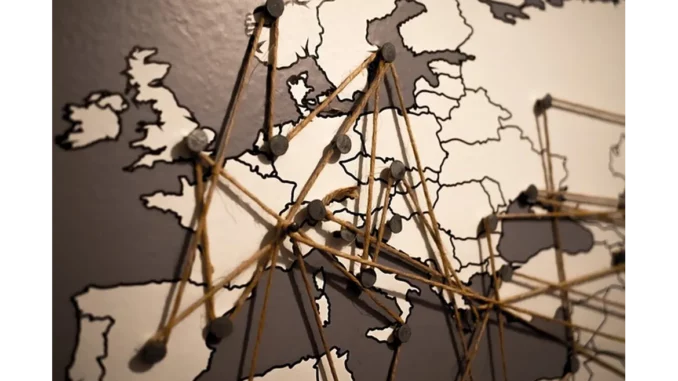
Summary
Euralarm, the European Trade Association for the electronic fire and security industries, has launched an ambitious initiative to create a comprehensive European database for fire-sensitive devices. This project aims to address the emerging fire safety challenges posed by the rapid adoption of renewable energy technologies such as lithium-ion batteries, solar panels, and electric vehicles. “By providing critical data to first responders, we can significantly improve safety outcomes,” stated Chris Downing, Director of Codes and Standards for Fire Suppression Products at Johnson Controls. The initiative underscores the need for collaboration among industry stakeholders to ensure safer integration of these technologies into buildings across Europe.
Main Article
The Fire Safety Challenge in Renewable Energy Adoption
The increasing shift towards renewable energy technologies is reshaping the global energy landscape, offering substantial benefits like reduced carbon emissions and enhanced energy efficiency. However, these advancements bring forth significant fire safety challenges, primarily due to the characteristics of the new technologies involved. Lithium-ion batteries, for instance, are widely used for their energy density but are susceptible to overheating, which can lead to severe fire incidents if not carefully managed. Solar panels and energy storage systems also introduce complexities in fire risk management due to their placement and energy output.
Recognising these challenges, Euralarm has embarked on a project to develop a centralised database aimed at improving fire safety measures across Europe. This initiative is particularly timely as the European Union intensifies its commitment to renewable energy through policy frameworks like the European Green Deal. The database will focus on the registration and management of fire-sensitive devices within buildings, serving as a critical tool for local Fire and Rescue Services.
Enhancing Firefighter Safety and Response
Chris Downing, who is leading the initiative, emphasised the database’s role in providing vital information to alarm responders before they reach the incident site. “Access to pre-incident data can dramatically enhance firefighter safety and effectiveness,” Downing remarked. The database will collect and disseminate essential details about the presence and condition of technologies like lithium-ion batteries and solar panels, enabling fire services to devise more informed response strategies.
The initiative highlights the growing need for data-driven solutions in fire safety, aligning with broader trends in smart city development and digital transformation. By integrating advanced data analytics, the project aims to identify trends, mitigate risks, and ensure the safe integration of renewable technologies into the built environment.
Collaboration: A Pillar for Safer Outcomes
Euralarm’s strategy hinges on fostering collaboration among various stakeholders, including industry players, researchers, regulators, and policymakers. This approach is designed to build a cohesive understanding of fire risks associated with emerging technologies. The association’s efforts are set to support the development of more robust European regulations and Best Practices, crucial for the safe deployment of renewable energy solutions.
The success of the database initiative will depend on the willingness of stakeholders to share data and insights. By pooling knowledge from diverse sources, Euralarm aims to create a comprehensive resource that promotes safer building practices across Europe.
Euralarm’s Legacy and Future Role
Since its inception in 1970, Euralarm has grown to represent over 5,000 companies in the fire safety and security sectors, with a collective market value exceeding €67 billion. The association’s members are dedicated to enhancing societal safety through innovative fire detection and prevention technologies. Euralarm’s current project underscores its enduring commitment to advancing fire safety standards and regulations.
As the fire safety industry continues to evolve, the role of emerging technologies such as cybersecurity, IoT, and cloud-based services becomes increasingly significant. Euralarm’s Fire section is actively exploring these developments to guide the industry’s future direction and standardisation efforts. These technologies promise more agile and effective responses to fire incidents, though they also require a judicious balance between regulatory compliance and technological innovation.
Detailed Analysis
The push towards renewable energy technologies, driven by climate change imperatives and economic incentives, is reshaping energy infrastructures globally. In Europe, the transition is bolstered by initiatives like the European Green Deal, which aims for climate neutrality by 2050. However, the rapid integration of these technologies into existing systems has outpaced the development of comprehensive safety guidelines.
The establishment of a centralised database for fire-sensitive devices can bridge this gap by providing a structured approach to managing the associated risks. This aligns with broader economic trends that favour data-driven decision-making and the adoption of smart technologies in urban planning. The initiative reflects a growing recognition of the need for proactive safety measures in the transition to a low-carbon economy.
Further Development
As Euralarm progresses with the development of the European database, further collaboration with national governments and international bodies will be crucial. The association is expected to engage with policymakers to ensure that the database informs and supports regulatory frameworks.
Looking ahead, the integration of new technologies into the fire safety landscape will continue to evolve. Euralarm’s ongoing monitoring of trends in cybersecurity, IoT, and other digital technologies will be imperative in guiding future regulatory and industry standards. Readers are encouraged to stay informed as Euralarm’s initiative unfolds, offering insights into the intersection of technology and safety in the era of renewable energy.

